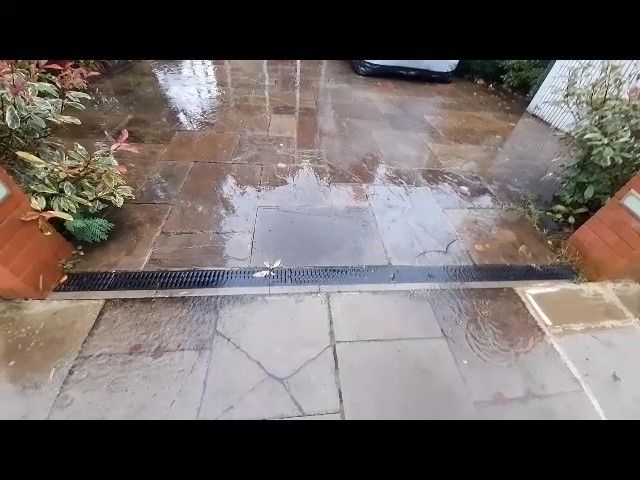
The 2008 regulations are only concerned with flood prevention. Despite the numerous other problems caused by these kinds of surfaces (see “It’s not just flooding”), it’s completely OK to cover an entire front garden with impermeable material as long as a soak-away makes it “permeable”.

How is rain prevented from running off? A small flower bed or gravel edge left unpaved can act as a soak-away. But if the entire front garden is covered over, contractors usually offer a grille or gap into which rain can run, then soak away into the ground below.
Usually this grille or gap is between the front garden surface and the pavement. Where the front garden slopes backwards from the pavement, it may be elsewhere.
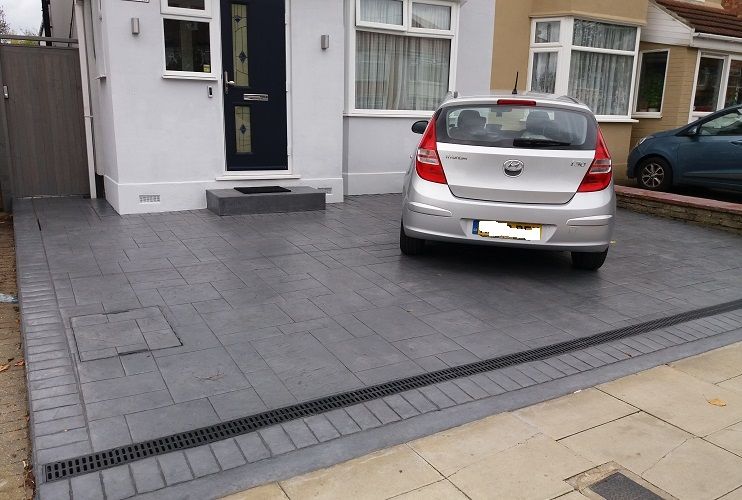
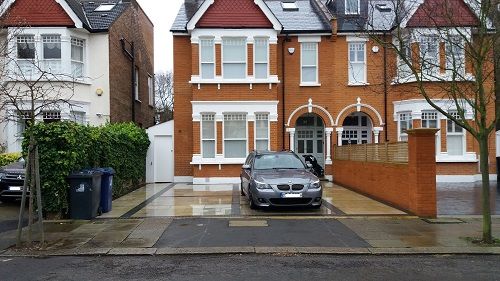
Sometimes the run-off requirement is simply ignored. If there’s no functioning grille, gap, accessible border or edge, rain just runs off onto the pavement. It’s rarely possible for local authorities to monitor this, given the number of front gardens in their areas and most culprits already having a pavement crossover (but they can be reported as planning breaches by individual members of the public).
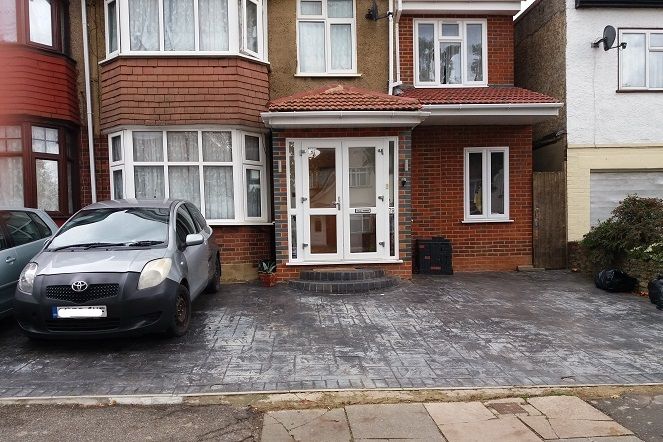
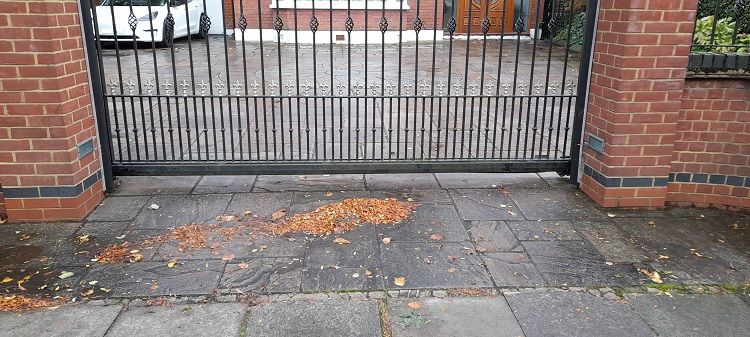
If grilles or gaps are put in correctly, how well do they work in practice, especially in the torrential downpours we’re getting due to climate change? Often, not well.
This is mainly because, perhaps contrary to householder’s expectations, they do actually need to be maintained! It doesn’t take long for moss spores, weed seeds, atmospheric dust and falling leaves, twigs, flower and seed casings from street trees to accumulate in the area beneath the gaps. They’re blown and washed in by wind and rain, pressed in by footfall and vehicles which break up the dry leaves, twigs and casings, and swept in by householders trying to keep the surface looking presentable.
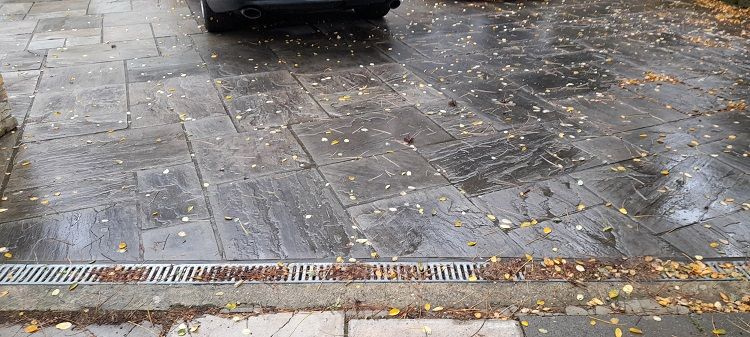
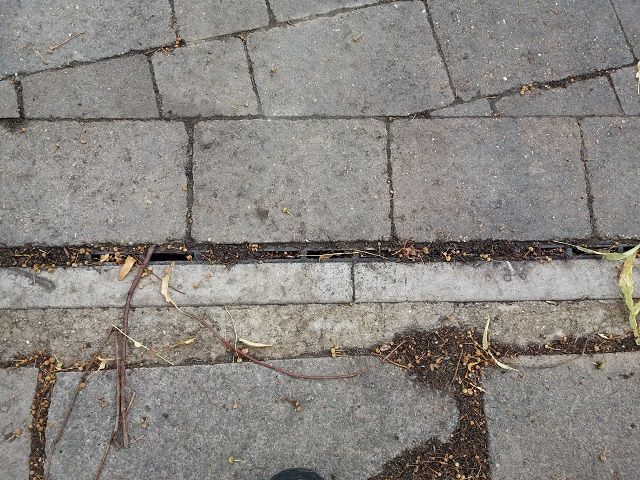
This accumulated debris begins to block the soakaway, and of course gets wet, creating the perfect environment for seeds and spores to grow. Weeds and moss excel at growing fast, so it’s not long before they take up residence and begin to block the grille or gap even more.
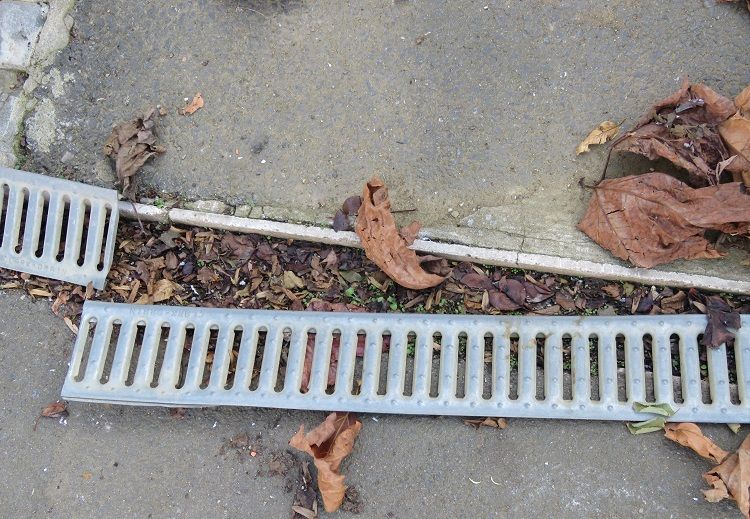

This is when the householder should lift the grilles or gap structure and clear out the accumulated debris. But few actually do this. So it doesn’t take long for an unmaintained grille or gap to become more or less completely blocked. That means that most rain just can’t flow into it any more, so flows over it instead.
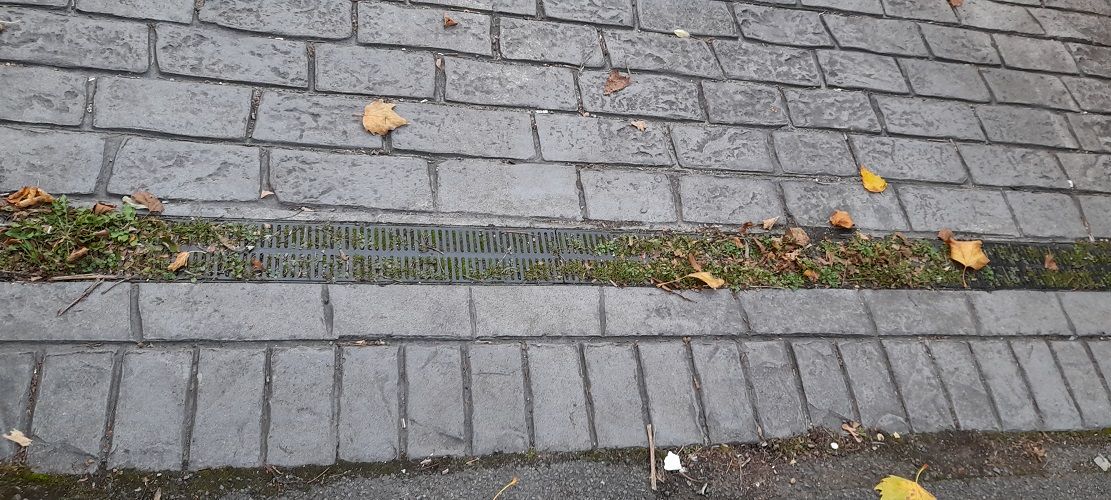
In the torrential downpours we’re increasingly experiencing, a surprisingly small blockage lets the rain run off straight off across the pavement, into the road and the road drains, as shown in the photos below:
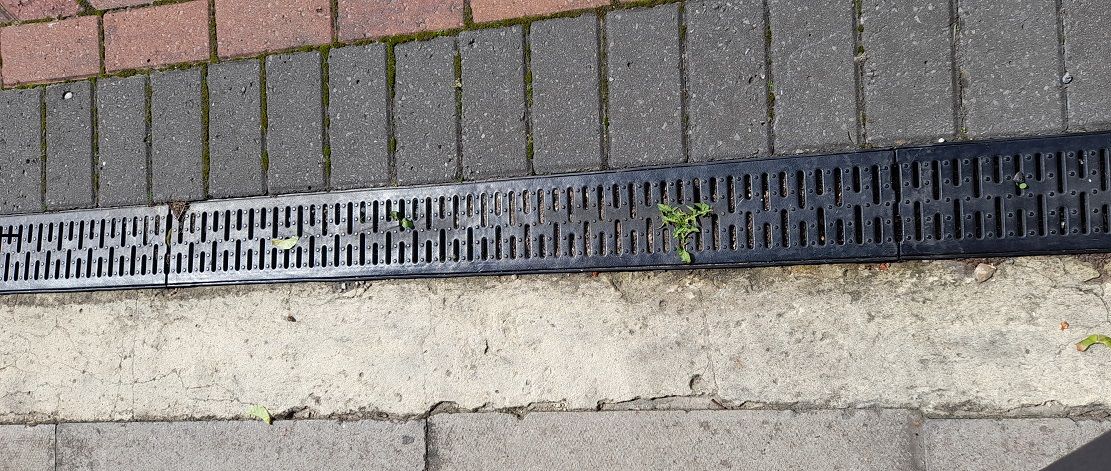

From here it’s a short step to higher risk of local surface water flooding, more pressure on local drains, the sewers and sewage discharges plus more herbicides, microplastics and other pollutants entering local rivers, waterways and groundwaters. All of which costs taxpayers more to clean up.
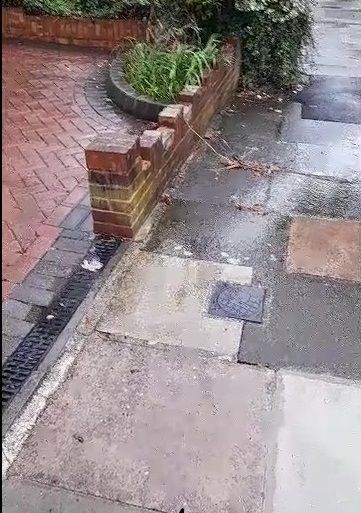

The Government and local authorities need to recognise these realities, as well as the many other reasons why extensive paving in front gardens is making the effects of climate change worse and adding to the poor state of nature in the UK.
The weak, inadequate 2008 regulations have been allowing all this for a very long time. They need to be changed rapidly, so that only green, minimal parking surfaces are allowed.
